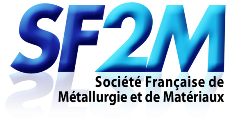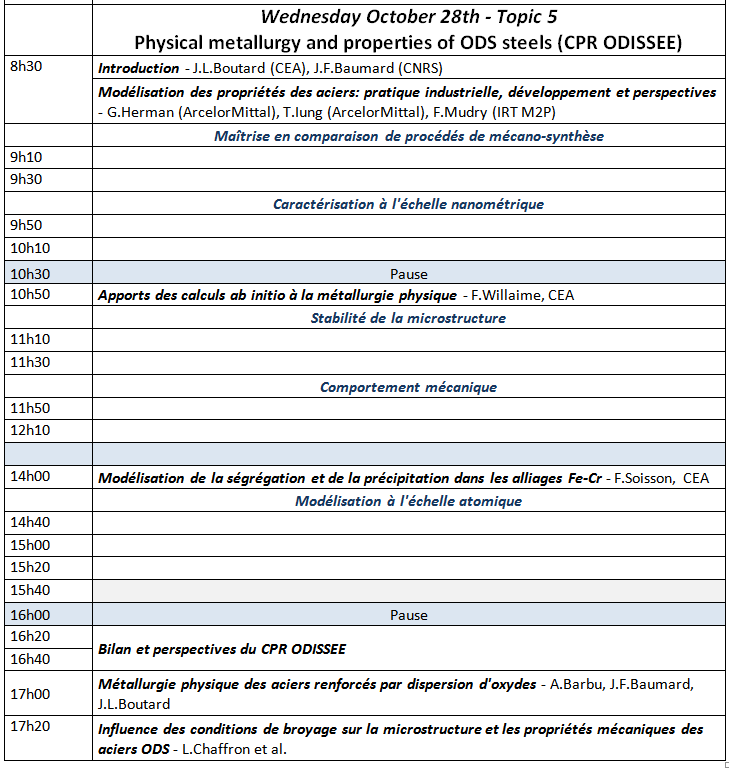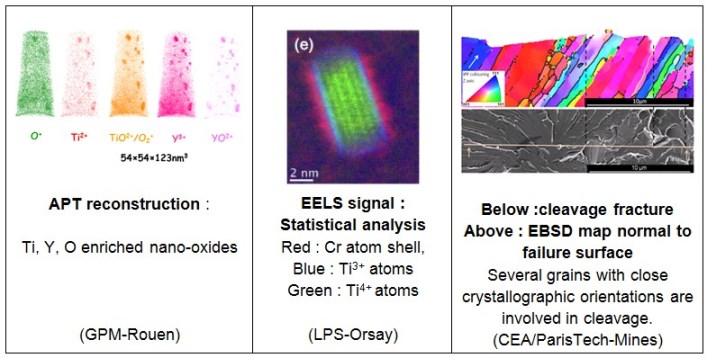
JA 2015
Materials for Energy Generation
October 26th – 28th, 2015, Chimie ParisTech
PARIS

Topic 5: Physical metallurgy and properties of ODS steels
(CPR ODISSEE)
Reporting of research programme ODISSEE
Draft programme is available below.
Coordinators :
Jean-Louis Boutard, CEA
Jean-François Baumard CNRS.
Oxide dispersion strengthened (ODS) ferritic or martensitic steels are foreseen as cladding materials for the fuel element of the future sodium-cooled fast neutron reactors of generation IV. Presently under development, these steels will have to be qualified in ASTRID1, which should demonstrate the technological feasibility of sodium-cooled fast neutron reactors. The nanostructure of this type of steel should result in an improved mechanical strength up to 700-750°C, and an excellent resistance to radiation effects up to high dose, ~200 dpa, as anticipated for the clad of fast neutron industrial reactors.
The objectives of the eleven PhD works of ODISSEE jointly funded by CEA, CNRS, AREVA, EDF and Mécachrome were to characterize the chemical composition, crystalline structure, and the first stages of nucleation of the nanometric oxides enriched in Ti, Y and O, which are formed during mechanical alloying and the first annealing treatments of the clad fabrication route, and are crucial for their in-service behaviour.
This reporting session will present the major contributions of chemical composition and crystalline structure characterisation via Atom probe tomography (APT) and transmission electron microscopy, especially Electron energy loss spectroscopy (EELS), and of kinetic modelling based on ab initio calculations, in understanding the nanostructuration ODS steels and their mechanical properties.
__________________________
1 ASTRID: Advanced Sodium Technological Reactor for Industrial Demonstration. ASTRID, presently at the stage of project, is foreseen to be built in the 2020 decade.
__________________________________________________________________


